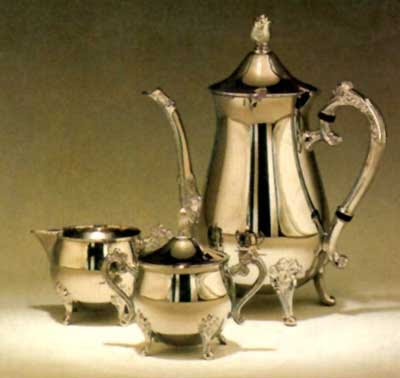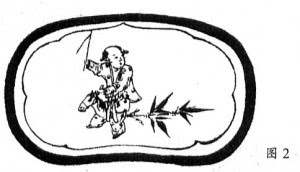Thursday, May 31, 2012
How To Care For, Preserve And Restore Antique Brass
For many people who own older turn-of-the-century type homes, it is often discovered that brass has been used extensively throughout the house, in light fittings and switches, staircase banisters and railings, and even in the curtain rods hanging in every room. Whilst many people prefer the appearance of polished brass, the antique metal actually becomes more valuable once it has developed a patina with age. If you have found antique brass somewhere in your home, this guide will help you to care for it, preserve it and restore it.
How to care for antique brass
Failing to clean antique brass properly can actually destroy it, so it is highly important to complete this process carefully if you want to retain the natural beauty of the metal. Whilst there are many products on the market that proclaim to keep antique brass in optimum condition, many of them don't actually work all that well.
The best way to care for brass is clean it without harsh chemicals. Take some warm, soapy water and a microfiber cloth, using them to remove any dust or grime that may have formed on the surface of your antique brass. Avoid using regular washcloths, brushes or even paper towels, as these are much too abrasive for the metal.
How to preserve antique brass
To lock in the patina that people so love about their antique brass items, you can apply an olive or linseed oil to the surface using a microfiber cloth. Avoid using the brass sealants that are available at hardware stores, as these are only effective for new metal and can actually destroy the antique finish that you are trying to preserve.
When applying olive or linseed oil to your antique brass, rub the items with circular motions until they are completely coated, then allow them to sit for at least 10 minutes. Use a dry microfiber cloth the remove any excess oil to avoid damage caused by contaminants sticking to the surface.
How to restore antique brass
If you are one of those people who hate the antique-y look that your brass develops over time, there is a way to potentially restore it to a more new appearance. First, you will need to ensure that your item is actually in a good enough condition to remove the patina without causing further damage by checking for cracks,flakes or black spots.
Use a specialized brass or metal cleaner, such as Brasso, to restore your antique items. Apply it to the metal's surface with a cloth and gently polish, being sure to remove any excess cleaner with a damp cloth. Remember that, by using a chemical cleaner on your brass, you are etching away at the brass itself, which considerably weakens the item.
View the original article here
Friday, May 25, 2012
Restoring An Antique Treadle: How Vintage Sewing Machine Repair Can Help Preserve A Family Heirloom
Nearly every family has a handful of traditions and heirlooms that are passed down from generation to generation, from annual summer trips and special holiday meals to jewelry keepsakes and other treasured items. Sadly, as the years go by, many of these traditions and cherished items are lost, either falling into disrepair or simply being forgotten. That's why it's so important to seize any opportunity you may have to preserve a beloved heirloom - the generations to come will thank you!
While there are varying types of heirlooms kept by families, antique sewing machines are commonly passed on as a representation of the hard work, love and dedication of generations past. Countless attics and closets across the country are home to vintage machines that once crafted the linens and clothing items that kept the family going decades ago. But what many people may not realize is that several of these old machines probably still work! They may need a little TLC, and possibly the expert touch of a vintage sewing machine repair specialist, but it's all worth it when you consider the traditions that will be kept alive as a result. Before consulting a professional, there are a number of preliminary measures that should be taken.
Thoroughly Clean Your Machine
After years of sitting idly in your grandmother's attic, the antique treadle that's been in the family for decades is ready to be dusted off and put to use! The first step is to thoroughly clean it, so you can then test its functionality without any dust or debris getting in the way. It's important to use proper methods when cleaning a treadle, as a simple mistake can cause irreparable damage. Traditionally, a treadle is cleaned by rubbing and polishing with kerosene. If kerosene is not available to you, other common cleaning agents used are Coke or Pepsi, metal polish, car polish, or wire wool. Harsh detergents can actually strip the signature gold leaf ornament from the machine, so be sure to avoid them!
Determine If You Can Fix It Yourself Or If Sewing Machine Repair Is Needed
Once you've cleaned your treadle, carefully test it out to determine if it is in working shape. There are some problems that can be fixed at home without extensive sewing machine repair training; for instance, the solution could be as simple as de-rusting the metal parts or lubricating the gears with oil. However, there are many problems that require the knowledge and skill of a professional. When in doubt, seek the assistance of a company that specializes in vintage sewing machine repair. After all, when it comes to family heirlooms, it's not as if you can simply go out and buy a replacement if it gets ruined!
Whether it requires a simple clean up or more intricate sewing machine repair, restoring a treadle that has been in the family for generations is well worth the effort. Not only will it provide a beautiful backdrop to any room, but it will also allow you to keep a family tradition alive. And preserving a piece of your family's heritage is something you simply cannot put a price tag on!
Need sewing machine repair in Chicago? Gunther Sewing Machine Repair can help preserve your family heirloom with superior vintage sewing machine repair. To learn more about their sewing machine repair services or to read the latest customer testimonials, visit their site today!
Thursday, May 10, 2012
Buying classical antiques – a look at whats in the Beijing antique markets at this moment
As always though, the field narrows and there are general trends to be aware of this year:
Each year it gets harder and harder to find good pieces. If you didn’t buy what you wanted last year, its probably gone this year.Prices are rising as supply diminishes and mainland Chinese begin to purchase and appreciate their own culture as well.Its difficult to find original paintings anymore. Most have been repainted or retouched.As always, the older, more original, rarer or better quality wood, the more expensive it is!
Here are some of the items for sale which catch my eye in the antique markets at the particular moment.
This cedar wood painting table is a nice find. Once used for calligraphy and scroll painting, today it will likely become a console in someones home.
Though technically a softwood, its is often treated as a hardwood and as the Chinese have peaked their interest in cedar wood (known in Chinese as nan mu ??) prices have risen significantly. Cedar has become one of the more valued of the varies woods used in Chinese furniture.
Embossed leather trunks were cheaper and easier to find ten years ago. Now finding ones in good condition are difficult, particularly one like this. Most are damaged to the point where repair is not worth it. Good luck finding another like this!
This particular wedding trunk from Shanghai would originally have been a brighter color. Over the years exposure to sunlight and the elements have caused the lacquer to gradually turn a deep burgundy color. The dragons, butterflies and double happiness symbols give clues as to its use as a dowry gift to a newly wed couple.
Often referred to by foreigners as a “wedding cabinets,” the symbolism and black colors on this early to mid Qing dynasty armoire from Pingyao tell us otherwise. Rare to find ones of this age and in this condition.
Shanxi, Pingyao, the last walled city in China has its own unique history concerning lacquer, going back well over 1200 years to the tang dynasty. Painstaking and time consuming lacquering techniques such as “push-light lacquer (????) and “Da Qi (??) produce the superior smooth glossy finishes and bright colors that are often seen on Shanxi furniture.
Several hundred years have taken its toll on this table and its feet are long gone. Nevertheless this is a rare find for the antique connoisseur.
Its rare to find any easily available furniture in China these days that dates back to the Ming Dynasty, yet this table is likely to be just that; a late Ming dynasty console table.
Known in Chinese as a “work table” (??) a vendor would have stood behind or beside it. They are often found in places like Gansu and Mongolia. The colors and motifs on this one point less to Mongolia and more to Gansu.
Normally constructed from pine or poplar wood, the painting on this table is original and has not been painted recently. However, age is another issue and would require closer inspection to determine.
View the original article here
Sunday, May 6, 2012
100 sons and children at play: Chinese Traditional Symbols and Motifs
It also implies fun, happiness, carefree and innocence and is seen on porcelain, folk arts, in paintings and embroideries quite a lot, though not exclusively. “Children at play” never depicts girls – this is an exclusively male only club. There are many many many variations on this auspicious theme from region to region and period to period.
A close-up of a round red lacquered box from Shanxi, shows the “children at play with balls” motif depicted on it’s side.
Most depictions are of children’s games, including:
- “Playing dolls”
- Children playing with balls
- Children playing with ducks or with deer
- Children riding a bamboo horse
- Boating, fishing, firecrackers
“100 children” known in Chinese as “100 suns & 1000 grandsons” is another similar but a different motif and is in particular is often associated with weddings. This one peaked in popularity during the Ming and Qing Dynasties and the number of children in each scene increased significantly. Supposedly this motif refers to Zhou Wen Wang, the founder of the Zhou Dynasty who had 99 sons and adopted 1 more for an even 100!
View the original article here




















